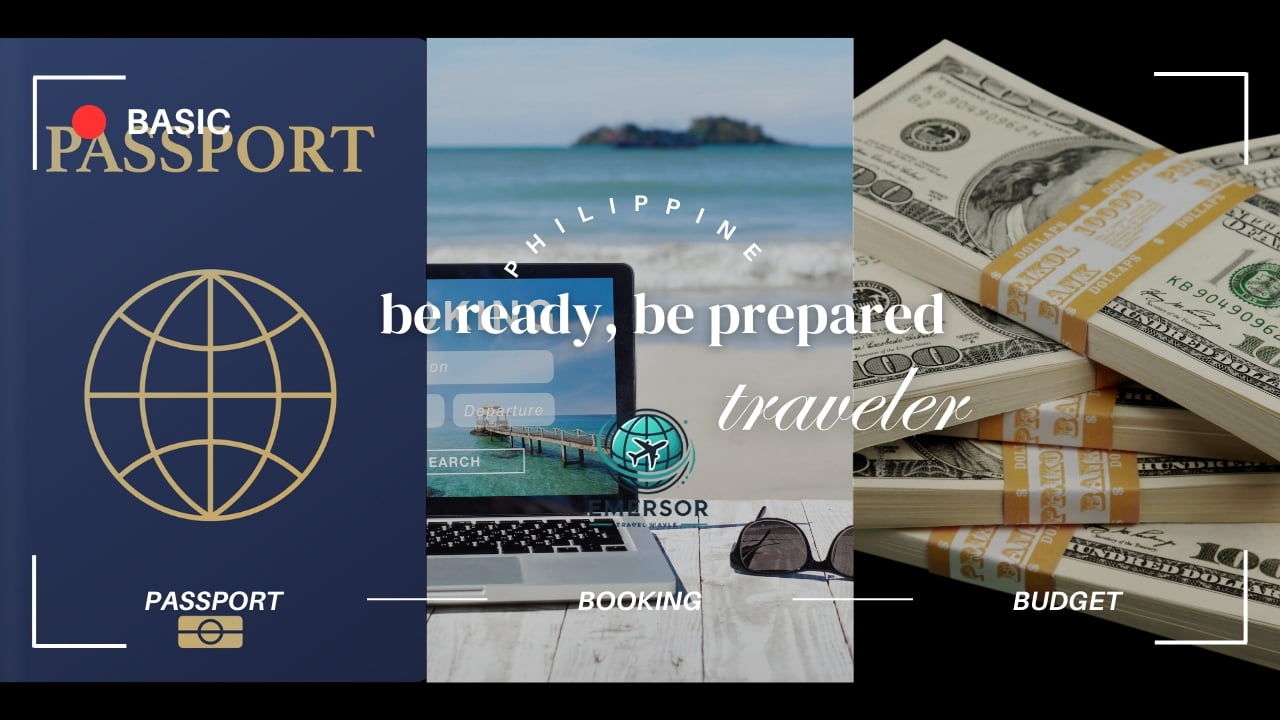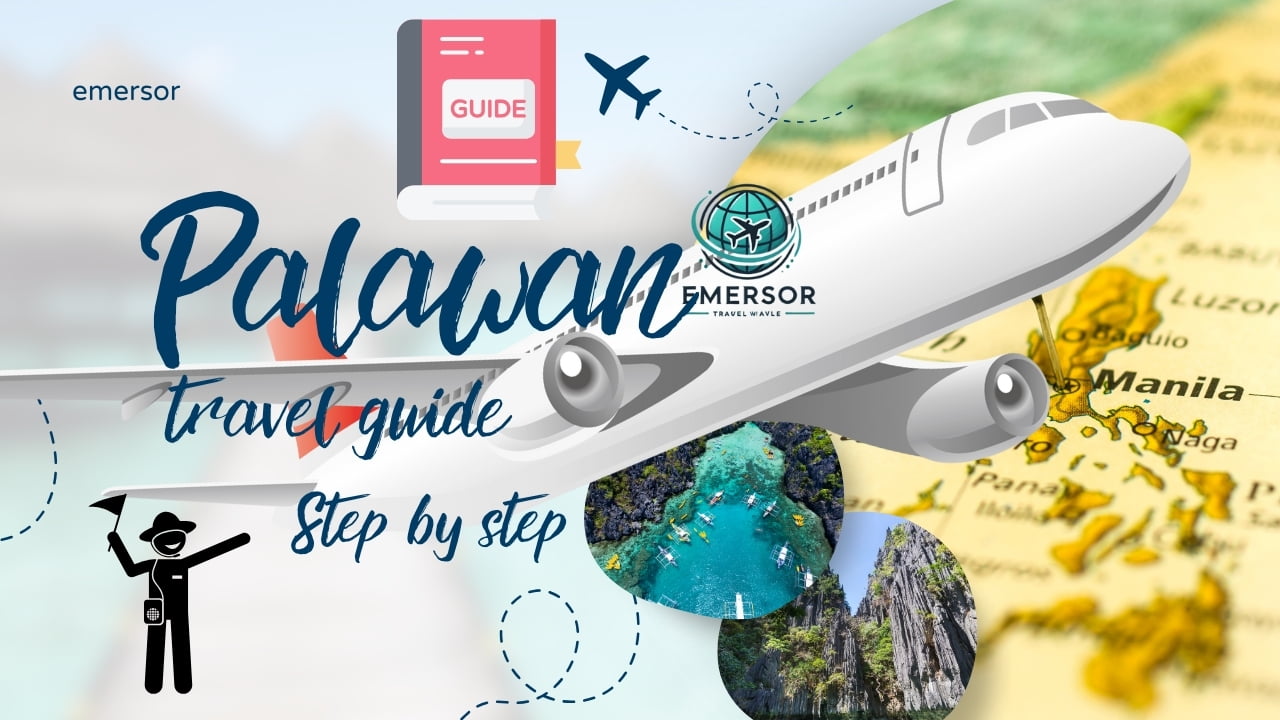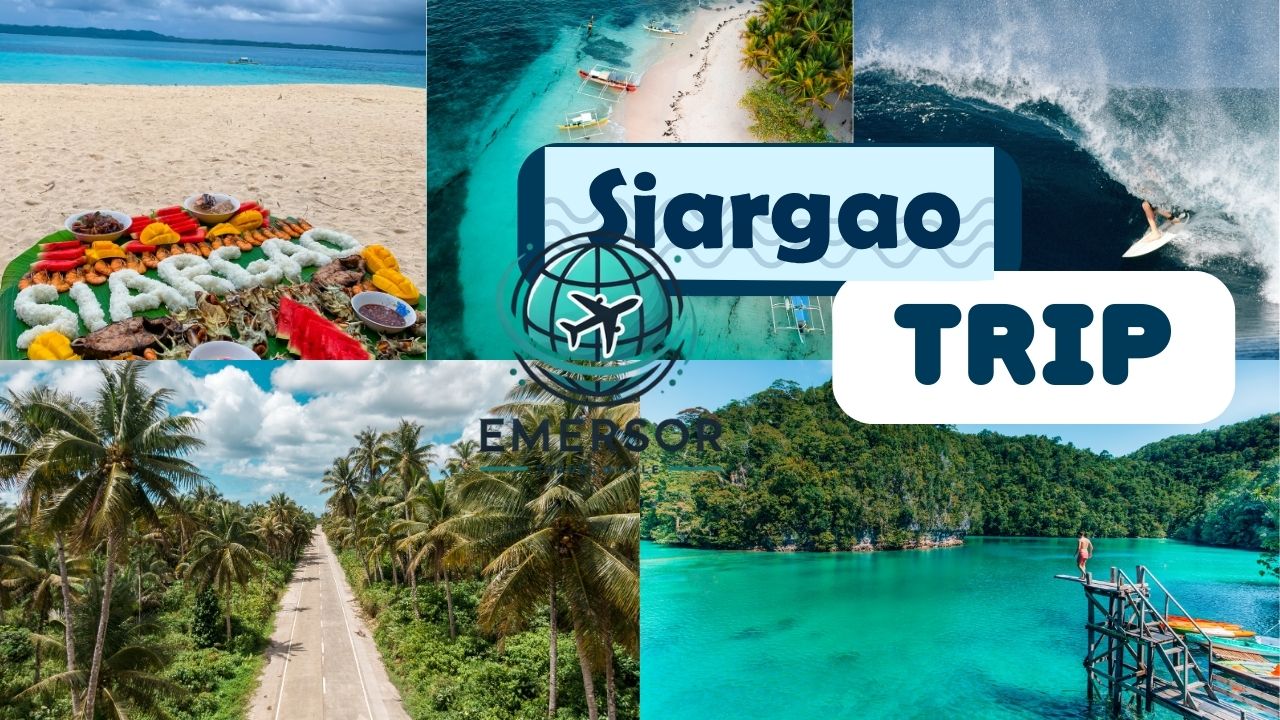Even though your preparation includes everything, documentation when traveling to Philippines is very important. Here’s a tips on what/how documents are required and the processes you need to have ready before you travel, while you’re there and even after the trip:
Passport
Validity: Seven tasks are trouble with the attractions based on your passport.
This does not apply to you because if your visa is less than 6 months validity from the date of return, the travel agency categorically states that you will not be granted permission to leave anyway, so this is a strict rule in the Philippines.
Blank Pages: The immigration officers may stamp your passport requiring you to have two empty pages in your passport.
Visa Requirements
Visa-Free Entry: Nationals from various countries including, USA, EU countries, Australia, Japan and other do not have to apply for a visa in advance because allowable duration of stay of up to 30 days is provided. Bureau of immigration provides all information regards countries eligible.
Visa on Arrival: This applies for some nation which international visitors of the country. However, it’s best to check with the nearest Philippine Embassy or Consulate for confirmation.
Extended Stay Visa: If your need more than 30 days extension, you can request for one at the Bureau of Immigration once you arrive Philippine. Stays beyond this period require visa and normally, normally one can apply for stays within 29 days to a maximum of six months are given.
Unless you wish to avoid in-person visits, it is advisable to request the extension at least a week before the original visa expired.
Some nationalities are eligible to enter the Philippines visa free, however upon arrival, they may be required visas before entering the country. In this respect, you must obtain a visa at a Philippine embassy or consulate situated in your country with relevant documents (passport, application for a visa, return air tickets etc.) when this is applicable to you.
Return or Onward Ticket
Evidence of Planning on Leaving: Travelers heading to the Philippines must furnish authorities with proof of fly out return arrangements. Such evidence may be demanded by immigration officers upon entry to the country.
This is designed to prevent anyone from remaining in the area longer than has been authorized. In case the person is not able to satisfy this requirement as there are no fixed travel itineraries, then a minimal or a non-refundable ticket can last-minute be acquired.
Exemption – there exists a certain group of long term explorers wising the internet and subscribing to “onward flight booking” services where they are issued with flight reservations for proof at the immigration without actually purchasing such tickets “booking” doesn’t mean boarding.
Travel Insurance
It is in the Policies of Some Airlines: Though there is no legal requirement from the government of Philippines some immigration officers and some airlines do ask for travel insurance provisions with regard to sickness especially for COVID-19.
Covers: That travel insurance must encompass medical insurance also covering COVID-19 and tre of emergency nature, cancellation of trip, baggage loss, or personal damage. In case of emergency contact details of your insurance company as well as a hard copy of your insurance policy need to be carried along.
Vaccination Proof: Many of the foreigners intending to travel to the Philippines by year 2024 have regarded vaccination against full COVID-19 as essential, especially those coming from countries bearing some health risks. It should be noted that it is essential to check actual rules and regulations and policies regarding international travel before going on , as there are chances that such policies are subject to change.
Negative COVID-19 Test: For unvaccinated passengers or passengers from certain countries or regions, a negative result of RT- PCR test or rapid antigen test taken within a specific period before departure may be required (e.g., 24-72 hours) depending on Health protocols at the time of travel.
Health Declaration Forms: Medical-related documents of international travelers may also be required to be submitted in the airport electronically. Departing, online forms are often available and this has to be done beforehand.
Customs Declaration Form Customs Declaration
Arrival: There are 2 customs forms that need to be completed on the plane – the arrival and the export forms declaring goods being imported to or being brought out from the Philippines respectively.
This process can take place on board or in the terminal. Remember to declare anything above duty-free limits usually in cash and if you have over ₱50,000 (PHP) or cash in total amount of U.S. equivalent of between $10,000.
Prohibited Items: Firearms, drugs, pirated items and many others belong to this category of items which are completely banned. In case one is carrying some of these items, he or she should declare these to avoid being fined or being sequestered.
Hotel/Accommodation Reservation
Booking Confirmation: Upon arrival at the immigration areas, immigration officers sometimes require that you provide them with evidence of your first few nights’ accommodation once you get into the Philippines. It’s advisable to have a print out or any other digital print of the booking confirmation from your hotel or Airbnb.
Address of Stay: You will need to fill and submit immigration forms. Asks for your stay in the Philippines as well. Make sure you have this information available, in case you are not booked in a hospital.
Identification (Other than Passport)
Photocopies: Reproduces or captures in some electronic forms your passport, visa, insurance and other key papers and records. In the event that the originals have been misplaced, it might help a great deal. It is advisable to keep all such copies separately from the original documents perhaps in the hotel room or in the luggage.
Driver’s License: If you want to rent a car or motor cycle in the Philippines, then a driver’s license is a must from the country. Otherwise, some of the rental companies will insist to have an International Driver’s Permit (IDP).
Travel Itinerary
Detailed Itinerary: While this is not a must for every trip, it can always be helpful to have a travel document with an itinerary, including places you intend to visit, internal flight arrangements, or even a list of organized excursions. This can be necessary to complete upon your arrival to the country, and some immigration officials may request that you provide this in order to verify that you are a visitor.
Domestic flights or ferry tickets: When traveling within the Philippines and you will be visiting several provinces or islands, remember to save your confirmation emails or hard copies of your domestic flight or ferry tickets.
Currency and Payments
Philippine Peso (PHP): The currency unit used in the country. Currency exchange can be done in airports, hotels, banks and at available ATMs.
Credit cards can be used in the cities and tourist hotspots, however, it is advisable to save cash for more local or small businesses.
Notify Bank/Credit Card Company: You should inform them if and when you are traveling out of the country as you may need to use your cards.
Bank and Credit Card Information
Bank Notification: Before leaving with your information, inform your bank that you will be going out of the country on a vacation so that your credit or debit card is not blocked thinking there is suspicious activity.
Credit/Debit Card: It is good to come along with a credit or debit card that can be used for international purchases. In cities, Visa and Mastercard are very common, but in rural areas, it is better to have cash with you.
Emergency Contacts: Create an emergency action plan and jot down contact numbers in case of a lost bank card, a lost credit card from a credit company or blocking cards for a travel insurance.
Exit and Entry Stamps
Retain Entry Stamp: On reaching the destination, it is essential to get the entry stamp from immigrations and also ensure that they carry the same with them. This shows your authorized length of stay.
The over-stay if you lose this or overstay will entail such penalties such as fines, which will require answers for immigration while within the borders.
Exit Clearance: Any foreign national who has remained in the country for more than six months still out of legal status but excuse for pregnancy may have to obtain a Emigration Clearance Certificate from the Bureau of Immigration before departing the country, in this case, the Philippines.
Children Traveling Alone
Parental authorization of unattained minors: Ensure that minors, travelling either without both their parents, or in the care of other adults then their biological parent(s), have signed travel documents called parental consent forms, especially when one is away from the child’s legal guardians. Immigration asks for proof of guardianship or permission.
Unrestricted Permissions (Related to Activities)
Scuba Diving Permit: Travelers who wish to dive in restricted areas such as Tubbataha Reef or Apo Island, would most probably require special permits. These are usually obtained by diving operators, however, it is nice to confirm in advance.
License to Fly Drones: If you intend to operate a drone for fun or for business, possession of a permit from the civil aviation authority of the the Philippines particularly in airports or in other high population areas is also necessary.
Travel History
Other visas: Make a point of looking out for stamps in your passport that are from other countries especially those that may evoke certain red flags or questions when one is in the Philippines. For example, courtesy of the Ministry of Internal Affairs, some travelers could experience hold backs or queries at immigration when they are coming in to countries having made several trips to some countries considered to be high-risk.
Clothing and Essentials
Light and Comfortable Clothing: The Philippines is a tropical country. Therefore, bring light and airy fabrics. If you are visiting beaches like Boracay or Palawan, you should take your swimsuit with you.
Rain Gear: If you are travelling between June and November, it is objectionable not to carry an umbrella or a rain jacket.
Sun Protection: Sunscreen, sunglasses and a broad-brimmed hat shield you from the tropical sun.
Waterproof Gear: When going to islands and beaches, think about carrying a sturdy case or dry bag for your electronics for the boat rides and water activities.
Snacks and Reusables: There are local snacks almost everywhere but carrying your protein bars and cutlery with you might be an additional bonus, particularly in less developed regions.
Adapters and Electronics
Power Adapter: The major plug types used in the Philippines are Type A, B, and C plugs (220V, 60Hz). If the plugs on your devices are different, you will need to buy a power adapter.
Power bank: It is important to have this on very long travel days or outdoor days to keep your phone charged.
Local SIM Card: While travelling, one may obtain a local sim card (Globe or Smart) which is very helpful especially when travelling to remote areas.
Packing Essentials
Toiletries: Toiletries are easy to find in the Philippines but it is best to pack your favorite ones.
Insect Repellent: To keep mosquito bites away, especially in the case of tropical or rural areas.
First Aid Kit: Items like in-house pain relief, a dozen band-aids here and some of the medicines prescribed you…
Research and Bookings
Accommodations: These should be pre-arranged usually for areas like Manila, Cebu, Boracay and Palawan that are generally overrun with tourists.
Transportation: It is critical to book within island hopping flights and ferry rides between the various islands of the Philippines. Any bookings for urban transport can be easily made through Grab apps.
Cultural Etiquette
Familiarity with Local Cultures: Make sure to respect local beliefs and practices. Some appropriate clothing when going to places of worship (make use of decent garments).
Language: Most likely English will be a common language and perhaps simple Filipino greetings. Just simple “po” and “opo” after the sentence.
Weather Check
Weather and Natural Disasters
Typhoon Season: For expecting typhoons the best season is usually between June and October. The precautions should be taken if planning trips then. During typhoon alerts, more information about the typhoon. Its whereabouts can be accessed on local news applications and websites such as Pagasa.
Earthquakes and Volcanic Activity: Being within the Pacific “Ring of Fire” as it is popularly known. The mild earthquakes are plausible even in The Philippines. It is advisable that you learn how to deal with earthquakes. And how to be inclined towards looking after tsunamis that happen on rare occasions.
Navigation Applications and Mapping Services
Offline Maps: Google Maps allows you to download maps for later usage or you can utilize apps such as Maps.me which do not require an internet connection.
Transport Booking Applications: As noted, Grab is one of the most used applications to order rides in cities and also for delivery of food.
Interpretation Applications: Communication in rural areas is not easy since not many people can speak English so this is where an app like Google Translates would come in handy.
Travel Money and Expenses
How much budget per day: Depending on your travel style the daily cost should be as follows:
Low budget tourism: $25-50 / day (hostels, street food, public transportation).
Mid-Leveltourism: $50-100/day (3stars hotels, simple food, interisland flights).
High-end Tourism: $150+ USD / day (Holiday Inns, over the top dining, taking up all the sightseeing with private guides).
Bargaining: Markets or tricycle or taxi drivers bargains are quite common. Remember to always inquire about the price before you make any service or good purchase.
Inter-Island Connections
Commercial Flights: Well-known airlines that regularly operate include Cebu Pacific, Philippine Airlines also, Air Asia to the major Islands.
Ships: Between Islands 2GO Travel and Ocean Jet ferries operate. These services should be booked in advance especially when there are lots of travelers.
Public Transport: In urban areas, riding public transportation such as jeepneys and buses is the easiest and cheapest alternative. However, these may not be very convenient for the tourists who do not know the routes.
Water and Food Safety
Water: Do not drink the water from the tap as it is dangerous. Only drink bottled or filtered water. Usually, filtered water is available in restaurants or hotels.
Street Food: While you enjoy street food in the Philippines, please ensure that the food is freshly cooked or properly reheated on the site to prevent stomach woes. Some of the serious street foods are balut (fertilized duck egg), taho (tofu with syrup) and various grilled foods.
Safe Restaurants: If you are in smaller towns, then for safer food. The best dine in reputable restaurants, which is the case too with bigger cities.
Emergency Numbers and Local Support
Emergency Contact: Please remember that 911 is the emergency hotline in the Philippines. Always prepare these numbers together with the contacts of your hotel. The embassy around and keep them ready especially during emergencies.
Local Contacts: In the Philippines, it is advisable to let friends and relatives know of your movements if you plan to use any indoor or outdoor activity. If not possible you may also make use of such travel groups or guiding services by installing apps like Couch surfing or Facebook travel groups.
To remove the likelihood of any problems getting into or traveling around the Philippines. It is good that you have all these documents in place before your trip.
for more information click here https://emersor.com/




